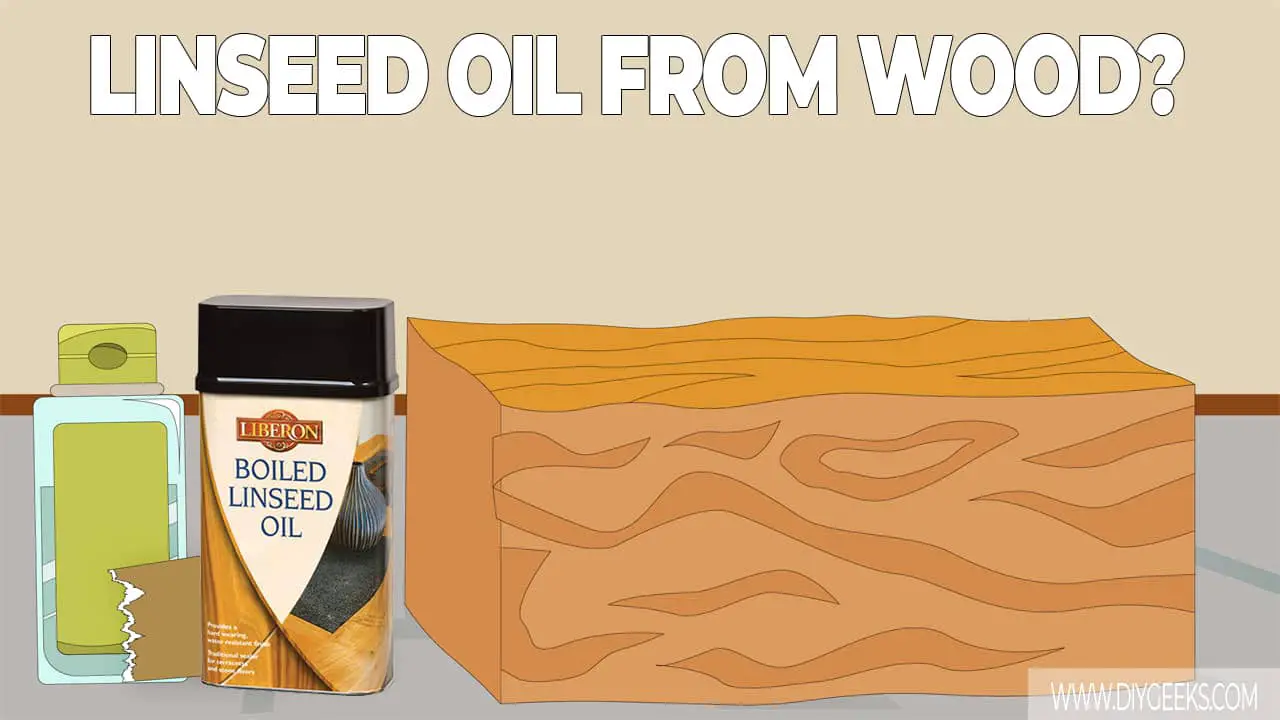Linseed oil is a drying oil type extracted from flax plant seeds (“Linum usitatissimum”) that enhances wood appearance and protects it by creating a moisture-resistant layer over it.
To remove Linseed oil from wood, use sandpaper, acetone and wire sponge, turpentine, or commercial paint removers.
Is Linseed Oil Hard to Remove from Wood?
Linseed oil is hard to remove from wood as it penetrates the surface pores deeply, has a good wood adhesion, and creates a durable and moisture-resistant finish.
Linseed oil is a penetrating finish that penetrates the wood pores deeply and creates a good adhesion. Since wood is a porous material it absorbs the Linseed oil too deeply, so removing it is harder without using a solvent-based remover.
Linseed oil creates a moisture-resistant layer (barrier) over the surface and prevents water, moisture, or liquids from penetrating its coating. The moisture-resistant finish prevents most liquid-based paint removers from removing the wood oil.
You need special paint removers that can penetrate a moisture-resistant layer and dissolve its finish.
Can You Remove Linseed Oil From Wood Without Sanding?
You can remove Linseed oil from wood without sanding if you use solvent-based paint removers, such as mineral spirits or turpentine.
Mineral spirits or turpentine penetrate the Linseed oil coating, dissolve the binder, and soften the wood oil, making it easier to scrape it off.
Once the wood oil is removed, you must clean the solvent-based paint remover residue with soapy water as it can damage the wood surface.
However, the easiest and fastest way to remove Linseed oil is to use sandpaper (or power sander).
How to Remove Linseed Oil From Wood?
To remove Linseed oil from wood, do the following things.
- Use Sandpaper.
- Use Acetone and Wire Sponge.
- Use Turpentine.
- Use Commercial Paint Removers.
1. Use Sandpaper
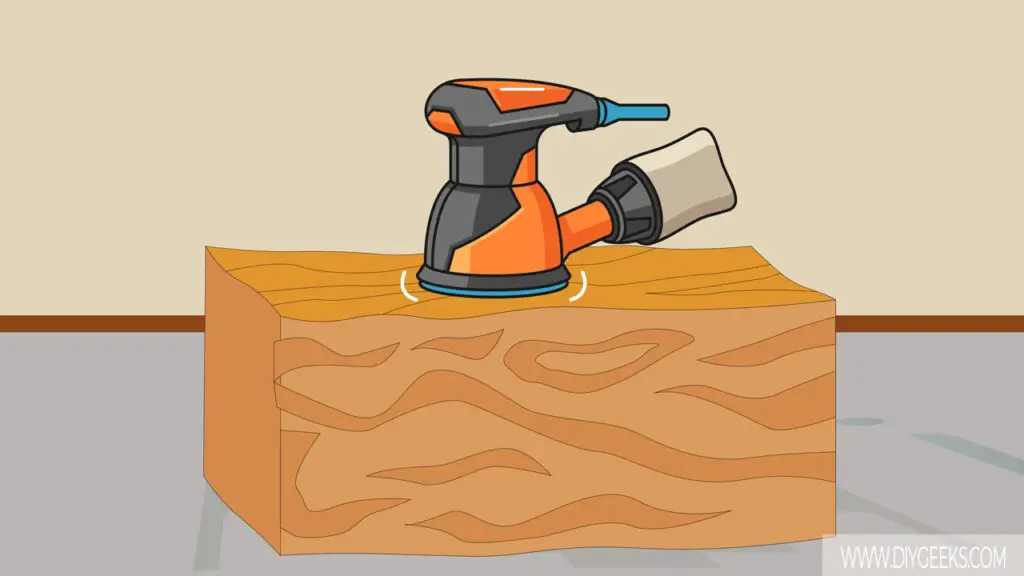
You can use medium-grit sandpaper (100-grit) to remove Linseed oil from wooden surfaces. The sandpaper will gradually wear off the finish until it’s completely removed. You can manually sand for small surfaces, and use a power sander for large surfaces.
The sanding advantage is that it removes the existing finish and smoothes the wooden surface making it paint-ready at the same time.
The tools you need for this method are listed below.
- Medium-grit and fine-grit sandpaper
- Working Equipment.
- A portable vacuum
- Large drop sheets or nylon
- Rags
- Orbital sander (for large surfaces)
A guide for this method is listed below.
- Clean the Surface: Clean the surface to remove dust and dirt that can clog the sandpaper and prevent it from removing the wood oil.
- Use Medium-grit Sandpaper: Sand the wooden surface with medium-grit sandpaper (100-grit). Inspect the finish every five (5) minutes to check if the Linseed oil is removed.
- Use Fine-grit Sandpaper: Once the existing finish is removed, use fine-grit sandpaper (220-grit) to smoothen the wood.
- Clean the Surface: Use a vacuum or damp rag to remove the dust from the surface.
2. Use Acetone and Wire Sponge
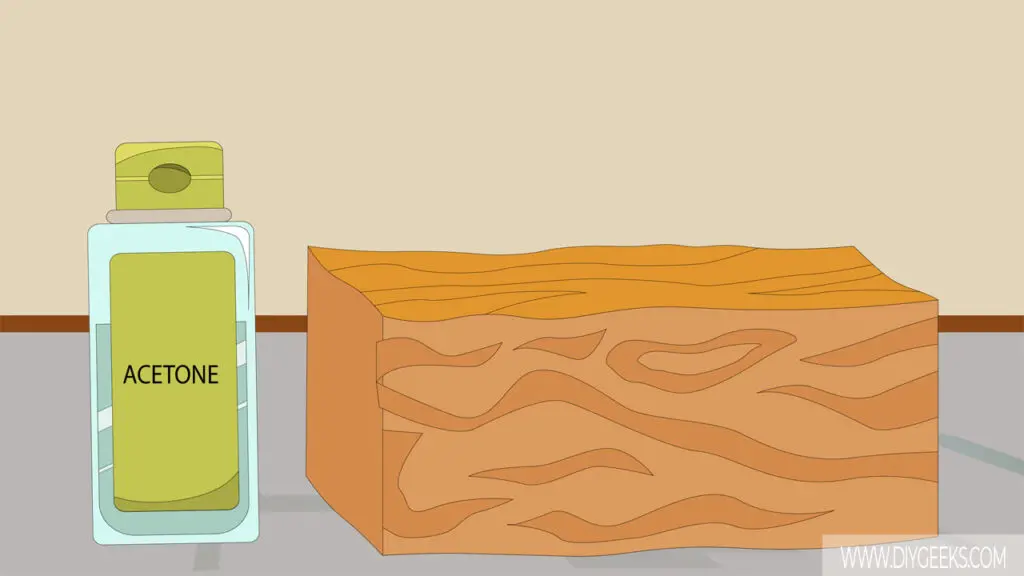
Use acetone to soften the Linseed oil finish, and use a wire sponge to wipe (scrub) its finish from the wooden surface.
Acetone is a solvent that penetrates the wood oil finish and dissolves the binder, softening or removing the entire finish. A wire sponge is a scrubbing tool that can remove soft wood finishes.
The tools you need for this method are listed below.
- Wire sponge or steel wool
- A bowl of warm water
- Acetone
- A scrubbing brush
- Rags
A guide for this method is listed below.
- Clean the Surface: Use a clean rag to wipe the wooden surface and remove dust, dirt, or debris.
- Dilute Acetone: Mix acetone with water to dilute its concentration as it can discolor the wooden surface.
- Pour Acetone: Pour the diluted acetone directly over the Linseed oil finish, spread it equally with a rag, and wait around 5-10 minutes.
- Scrub the Finish: Use a wire sponge to scrub the Linseed oil finish from the wood.
- Clean the Wood: Use warm soapy water to remove the acetone residue and clean the wooden surface.
3. Use Turpentine
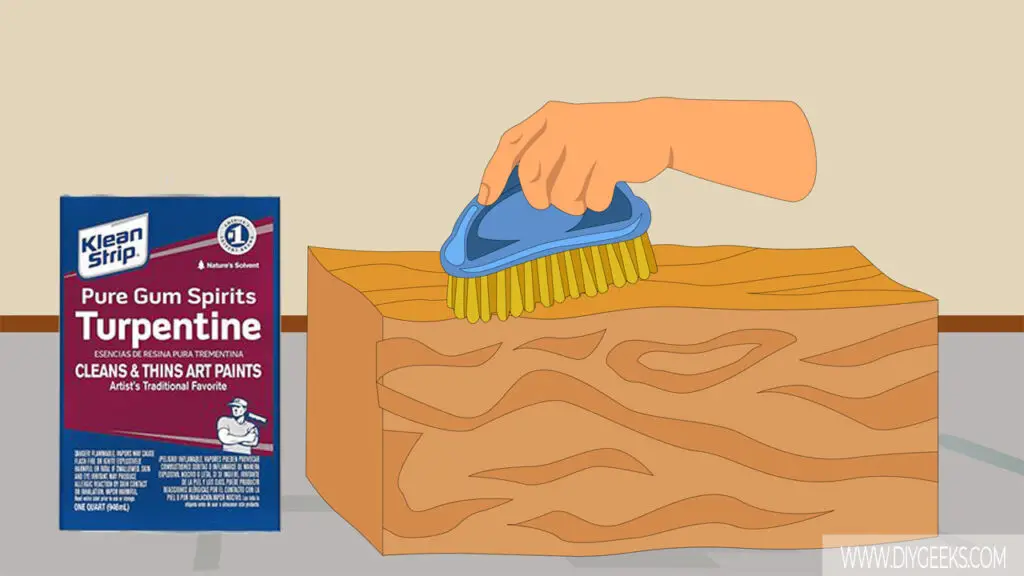
Turpentine is a petroleum-based paint thinner that can remove different paint and wood oil finishes. It penetrates the wood oil finish and breaks its bond with the surface, making scraping or scrubbing the finish easier.
It’s recommended to use turpentine for small wooden surfaces.
The tools you need for this method are listed below.
- Turpentine
- Rags
- Water
- Dish soap
- Plastic putty knife
A guide for this method is listed below.
- Clean the wooden surface to remove dust, dirt, or debris that can prevent turpentine from penetrating the wood oil finish.
- Apply turpentine over the wood oil finish with a rag.
- Wait for around 15 minutes or until the finish starts to bubble.
- Use a scrape or scrubbing brush to remove the Linseed oil from the wood.
- Re-apply turpentine for leftover wood oil.
- Use warm soapy water to remove the turpentine residue and clean the wood.
4. Use Commercial Paint Removers
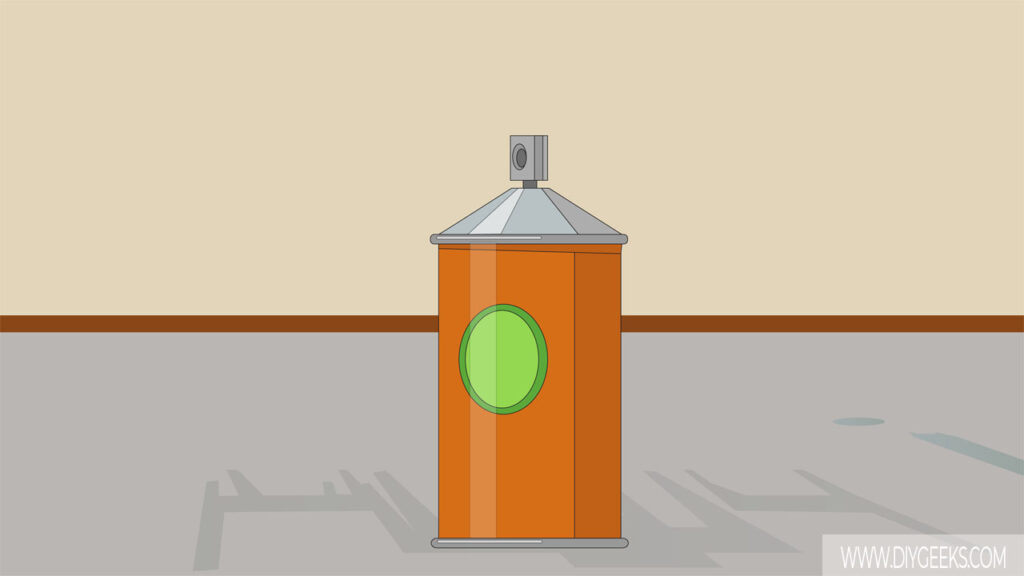
Commercial paint removers are products designed to penetrate and remove or soften paints, sealers, wood stains, and wood oils.
Most paint removers penetrate the wood oil finish and create a layer over and under it. Once the paint remover coating is dry, use a paint scraper to remove it and the existing finish will also get removed.
Ensure to use commercial paint removers that can remove wood oils too.
How Soon Can You Repaint Wood After Removing Linseed Oil From It?
The wait time before repainting wood after removing linseed oil from it depends on the removal method. You can immediately repaint wood if you use sandpaper or a power sander to remove the Linseed oil.
If you remove the existing finish with a solvent-based paint remover, you must wait around 24 hours before repainting wood. This is because you must remove the solvent-based paint remover residue, and then allow the wood to fully dry before repainting it.
If you don’t remove the solvent-based paint remover residue from the wood, and apply a paint or wood oil coating over it, the new finish won’t adhere properly and the wooden surface will get discolored.
